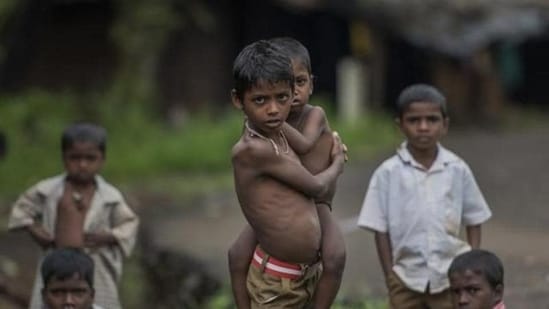Addressing malnutrition as a strategic investment in the nation's future
This article is authored by Gaurav Gogoi, senior Congress leader and Member of Parliament from Assam.
As a three-time elected Member of Parliament (MP), I have had the privilege of witnessing various advancements in our country’s public health policy. There are many critical issues that demand our attention, but none as urgent and pervasive as the issue of malnutrition in our country. We cannot overlook the fact that we are behind global nutritional targets, especially the burden of maternal anaemia and wasting. This not only jeopardises the health and well-being of millions of our citizens but also poses substantial obstacles to our nation's socio-economic development.

The repercussions of malnutrition are profound and far-reaching. It is a complex issue, influenced by diverse factors – such as affordability of nutritious foods, cultural dietary preferences and ages-old discriminatory social norms that dictate access to food, among others. Given its substantial impact on society, it is imperative that we adopt a multifaceted approach that employs both top-down policy interventions as well as ground-up community engagement strategies. It goes without saying that this requires the highest level of commitment from all political leaders and parties at both national and states levels to safeguard the health of our communities.
The high burden of diseases resulting from malnutrition contributes to escalating health care costs for the government as well as increased out-of-pocket expenditures for individuals. As we know, the most economically disadvantaged among us are most adversely affected. The cycle of malnutrition and poverty cannot be broken without a comprehensive and concerted effort. Within even underserved and vulnerable groups, a subset of those who are worst affected are women. Without independent means of livelihood, and subject to discriminatory social practices within households, women are often left with less food than other family members, lower access to health care and higher risks of severe long-term health issues.
This impact is visible across the lifecycle. In adolescent girls, malnutrition can adversely impact academic performance and lead to high rates of absenteeism. This is a cause for concern since adolescent health is a significant marker of women’s labour force participation in the long-term. Improved nutrition for adolescents enhances their potential to engage effectively in productive and developmental activities. It is estimated that 22% of income is lost every year by an adult who suffers from malnutrition. This will not only hinder India’s potential to fully leverage its demographic dividend but also exacerbate gender disparities in the workforce, impacting both the national economy and our ability to achieve gender parity.
The way to address this is to ensure that girls and women have access to adequate and nutrient-rich food. Diet diversity, the consumption of a variety of foods from various food groups, is a crucial component to improve nutrition outcomes. But, sadly, this is out of reach for many, not just because of poverty but often lack of knowledge. Nutrition education can catalyse positive dietary changes, laying the foundation for good health. Families must be empowered with information about balanced diets and the need to ensure girls and women receive adequate food. Integrating nutrition into our educational curriculum can instill lifelong habits of healthy eating among our youth, ensuring a healthier future generation.
We must simultaneously strengthen our health care systems to ensure delivery of essential nutrition interventions, especially among underserved communities. Integration of nutrition into routine health care services, especially those targeted for vulnerable populations such as pregnant women, lactating mothers, infants, and young children, would go a long way in addressing the issue and also establish awareness around it. It is also imperative that we continue to invest in our workforce and their capacity, to ensure that they are equipped with the requisite knowledge and skills to address nutrition-related issues and the evolving nature of it.
Most important, it is essential that a holistic gender perspective is integrated into all efforts. Since women are more affected by malnutrition and food insecurity, they should be at the forefront of this movement. Leveraging women-led self-help groups (SHGs) for community interventions, such as raising awareness about good nutrition and promoting diet diversity, holds immense potential in addressing some of these issues.
We have been bestowed with a unique opportunity and stand at a critical moment ahead of the Sustainable Development Goals set for 2030. Malnutrition permeates through various facets of development, from health to education, economic growth, gender equality, and is intricately linked to most of the SDGs. While the government bears a significant part of this responsibility, it is also incumbent upon us to recognise the need for a collaborative approach. Parliamentarians can contribute significantly by focusing on improving nutrition indicators in their constituencies. If all MPs intensify their efforts, it would have a substantial impact on the overall nutritional health of our nation. As an elected representative, I am hoping to collaborate with all stakeholders, including the government, to ensure that every individual, especially our women and children, lead healthy lives and build a stronger, more resilient India.
This article is authored by Gaurav Gogoi, senior Congress leader and Member of Parliament from Assam.





